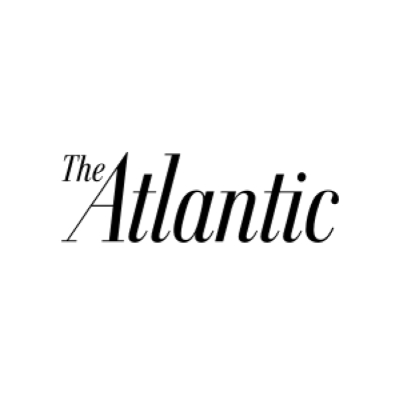 The Atlantic Article Rating
The Atlantic Article RatingThe Roots of Republican Extremism
- Bias Rating
-10% Center
- Reliability
N/AN/A
- Policy Leaning
10% Center
- Politician Portrayal
-21% Negative
Continue For Free
Create your free account to see the in-depth bias analytics and more.
Continue
Continue
By creating an account, you agree to our Terms and Privacy Policy, and subscribe to email updates. Already a member: Log inBias Score Analysis
The A.I. bias rating includes policy and politician portrayal leanings based on the author’s tone found in the article using machine learning. Bias scores are on a scale of -100% to 100% with higher negative scores being more liberal and higher positive scores being more conservative, and 0% being neutral.
Sentiments
N/A
- Liberal
- Conservative
| Sentence | Sentiment | Bias |
|---|---|---|
Unlock this feature by upgrading to the Pro plan. | ||
Reliability Score Analysis
Policy Leaning Analysis
Politician Portrayal Analysis
Bias Meter
Extremely
Liberal
Very
Liberal
Moderately
Liberal
Somewhat Liberal
Center
Somewhat Conservative
Moderately
Conservative
Very
Conservative
Extremely
Conservative
-100%
Liberal
100%
Conservative

Contributing sentiments towards policy:
65% : Communism was over, the stock market was rising, Silicon Valley was just taking off, and few were interested in Buchanan's grim vision of a looming "illegal invasion."59% : His call for a barrier at the border has become a staple of Republican platforms, as have his denunciations of cultural decadence, his skepticism about free trade, and his warnings about the dangers of the "global elite" and of immigrant incursions.
59% : And as Clinton's presidency went on to demonstrate, the laissez-faire economic agenda of the 1980s and '90s became a largely bipartisan one: It promised a vision of a newly dynamic, globally plugged-in America rescued from boom-and-bust economics by low tax rates and the light hand of regulation.
54% : Not all that long ago, the GOP was the party of Big Business, free markets, "traditional" family values, and anti-communism.
54% : Under the broad umbrella of opposing socialism and communism and defending freedom, all kinds of policies that might otherwise have appeared narrowly self-interested -- free-market economics, anti-tax measures, opposition to unions, an aggressive interventionism in Vietnam and elsewhere -- acquired an idealistic gloss.
53% : During the 1930s, '40s, and '50s, the fight against the New Deal and the Soviet Union gave the right a new energy.
53% :The collapse of the Soviet Union and decline of communism in the early '90s shook the political world of the right.
52% : From the start of the 1990s, his hostility toward free trade and NATO, his extremist proposals on immigration, and his jeremiads against cultural decline marked him as an outlier.
52% : In pursuit of both goals, conservatives embraced the ideology of the free market -- as articulated, most notably, by Friedrich Hayek and Milton Friedman -- and rejected the isolationism and "America First" mentality that had prevailed among many on the right prior to the war.
50% : A similar shift took place on Capitol Hill, where a program of tax cuts and deregulation was supplemented by constant hyperbolic invective.
49% : Despite the apparent triumph of capitalism in the Cold War, many conservatives in the 1980s and early '90s were gripped by what Continetti calls a "deep-seated pessimism."
48% : Its key activists lacked the establishment's intense focus on economic issues, and were angry that their own zealous focus on cultural issues (strictly limiting abortion, banning gay teachers from public schools) wasn't shared.
45% : Helen Chenoweth, the three-term Idaho representative in the '90s, catered to militia supporters and the far right with claims that the United Nations was secretly plotting to institute a "one world" government, a mission enabled by federal agents in "black helicopters" flying over Idaho.
43% : The consensus among political historians of the post-World War II years is that the conservative movement of the period was driven by two connected concerns: the desire to constrain the welfare state and the labor unions that had been created during the New Deal, and the imperative to fight international communism.
42% : The radical tax cuts, hostility toward labor, and deregulation that marked the 1980s facilitated the rapid deindustrialization of American cities and the rise of finance and services as the motors of economic life in the United States.
38% : An early draft of the speech went further still: "We cannot erect a Berlin Wall across the southern border."
21% : Already, anti-communist hard-liners had denounced Reagan for meeting with Mikhail Gorbachev, and evangelicals had been chafing at his failure to do more to outlaw abortion.
*Our bias meter rating uses data science including sentiment analysis, machine learning and our proprietary algorithm for determining biases in news articles. Bias scores are on a scale of -100% to 100% with higher negative scores being more liberal and higher positive scores being more conservative, and 0% being neutral. The rating is an independent analysis and is not affiliated nor sponsored by the news source or any other organization.





















